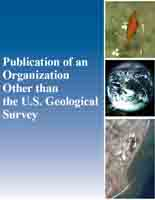Discovery of an intact Quaternary paleosol, Georgia Bight, USA
Links
- More information: Publisher Index Page (via DOI)
- Open Access Version: Publisher Index Page
- Download citation as: RIS | Dublin Core
Abstract
A previously buried paleosol was found on the continental shelf during a study of sea floor scour, nucleated by large artificial reef structures such as vessel hulks, barges, train cars, military vehicles, etc., called “scour nuclei”. It is a relic paleo-land surface of sapling-sized tree stumps, root systems, and fossil animal bone exhumed by scour processes active adjacent to the artificial reef structure. Over the span of five research cruises to the site in 2022–2024, soil samples were taken using hand excavation, PONAR grab samplers, split spoon, hollow tube auger, and a modified Shelby-style push box. High-definition (HD) video was taken using a Remotely Operated Vehicle (ROV) and diver-held cameras. Radiocarbon dating of wood samples returned ages of 42,015–43,417 calibrated years before present (cal yrBP). Pollen studies, together with the recovered macrobotanical remains, support our interpretation of the site as a freshwater forested wetland whose keystone tree species was Taxodium distichum—bald cypress. The paleosol was identified as an Aquult, a sub-order of Ultisols where water tables are at or near the surface year-round. A deep (0.25 m+) argillic horizon comprised the bulk of the preserved soil. Comparable Ultisols found in Georgia wetlands include Typic Paleaquult (Grady and Bayboro series) soils.
Study Area
| Publication type | Article |
|---|---|
| Publication Subtype | Journal Article |
| Title | Discovery of an intact Quaternary paleosol, Georgia Bight, USA |
| Series title | Applied Sciences |
| DOI | 10.3390/app15126859 |
| Volume | 15 |
| Publication Date | June 18, 2025 |
| Year Published | 2025 |
| Language | English |
| Publisher | MDPI |
| Contributing office(s) | Florence Bascom Geoscience Center |
| Description | 6859, 13 p. |
| Country | United States |
| State | Georgia |
| Other Geospatial | Georgia Bight |


